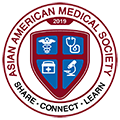Earlier this month, the New York Times reported on a boy, Kendric Cromer, 12, who was making the most progress in treating his Sickle Cell Disease (SCD) with gene therapy. The article discusses his 9-month-long journey to curing his SCD. However, I was disappointed the article did not discuss the gene-editing techniques involved in SCD gene therapeutics, or really the biological mechanism behind SCD–both fascinating topics in biology.
SCD is caused by a point mutation in the gene that codes for hemoglobin (Hb), the essential protein in red blood cells (RBCs) that allows them to carry oxygen. The point mutation changes a glutamic acid to a valine in Hb’s primary structure, resulting in protein misfolding. The misfolding causes Hb to stack onto other misfolded Hbs, creating long “rods” that stretch out the soft RBC into a sickle shape. Sickled RBCs tend to clog small blood vessels. Hb in “rod formation” decreases the cell’s affinity to oxygen and reduces the cell’s lifespan. As a result, patients with SCD need to take anti-stroke medication, receive frequent blood transfusion, and be perscribed painkillers to battle the pain of clotted vessels.
However, this reality for SCD patients is on the horizon of change. In December 2023, two companies, Vertex Pharmaceuticals® and Bluebirdbio® were approved for the medicinal use of gene therapy to treat SCD in patients aged 12 and up. Both follow a similar procedure: take the patient’s RBC stem cells to their lab, where their individual gene-editing techniques are then applied. After the sample is sufficiently treated, intense chemotherapy is used to clear the patients old stem cells, containing the mutation for SCD. The gene-edited stem cells are later infused back into the patient, where they will proliferate and dilute the amount of sickling Hb in the patient’s bloodstream.
CASGEVY®, produced by Vertex Pharmaceuticals, uses CRISPR technology to turn on the gene for fetal Hb. Fetal Hb is expressed during pregnancy and is most adapted for conditions in the womb. However, given its slightly different structure from adult Hb with the SCD mutation, they do not sickle. LYFGENIA®, under Bluebirdbio, however, approaches gene editing differently. Instead of reactivating an endogenous gene, or a gene already within the genome, LYFGENIA uses a lentiviral vector to deliver a healthy Hb gene into the sample. (Lentiviruses are a class of viruses that are often used in research to insert genes of interest into a genome.) As you may notice, neither CASGEVY nor LYFGENIA edit the Hb gene directly. Even though gene-edited RBCs will still transcribe sickling Hb, the presence of healthy Hb will effectively “dilute” the sickled ones. The “dilution” effect prevents excessive stacking of Hb and theoretically, cures the patient of SCD.
Although Kendric’s progress in his treatment is incredibly promising, it is important to acknowledge remaining drawbacks of gene therapeutics. The treatment has taken a huge toll on his normal life–as the NYTimes article states, he was unable to attend camp due to a hospital-acquired disease. The 9 months of LYFGENIA therapy has cost the hospital millions in USD and many hours worked by medical personel. Even so, I have hope that the more gene therapy is researched, the more accessible it will become–paving way for the treatment of genetic diseases that were once thought untreatable.
